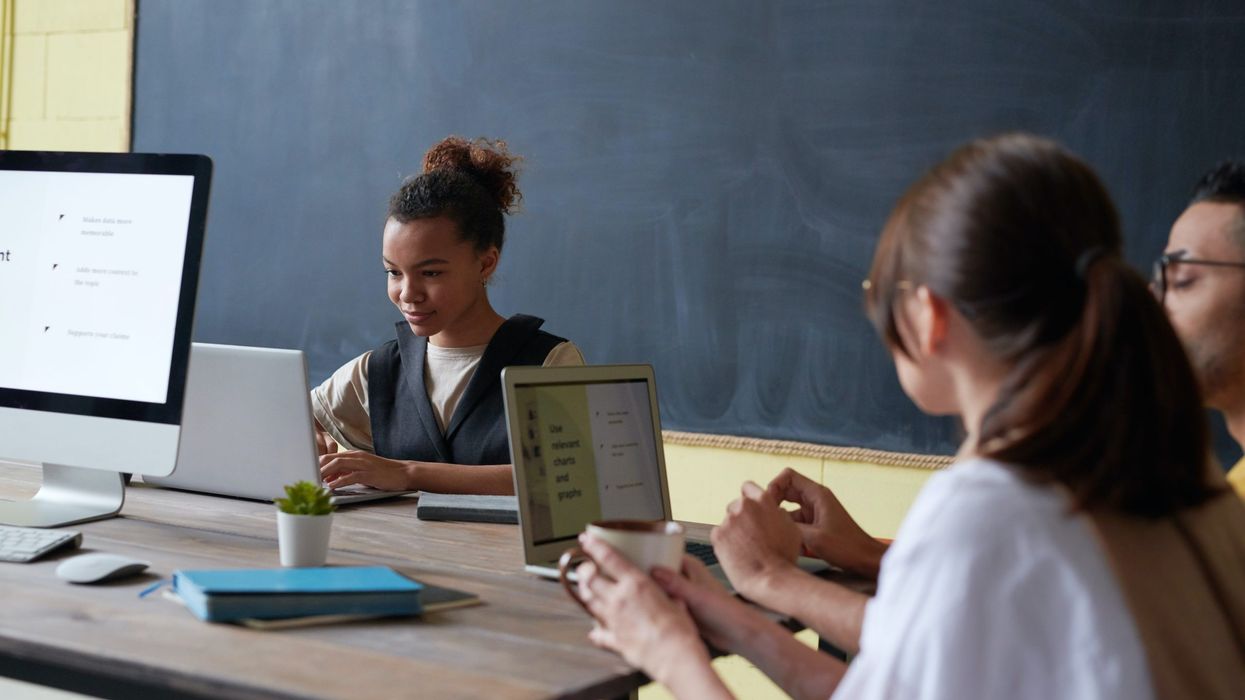As the world moves forward with the invention of various technologies and resources, we adapt to changes! These changes are supposed to make our life easier, more comfortable, and better! One similar classroom approach that has appeared is flipped classroom!
So, what exactly is it? What are the benefits of the flipped classroom? Is it worthy of applying in our education system?
What is a Flipped Classroom?
The flipped classroom is an instructional approach in which teachers and studying are reversing the traditional methods.
Instead of teachers lecturing in classes and assigning homework to students to complete outside of class, the flipped classroom model involves the students watching instructional videos.
It also can be engaging with learning materials before coming to class. Now, instead of doing something as an assignment, students can invest their time in learning about it!
Flipped classrooms are proven to have more interactive and collaborative activities during class time! Here students can work on various projects, tackle problems and discuss concepts with their teachers and peers.
The primary objective of it is to make learning more student-centered and engaging, while also giving students more control over their learning!
6 Best Benefits of a Flipped Classroom
We think there are numerous advantages of the flipped classroom. The traditional classroom approach is just like traditional ways of writing essays.
Flipped classroom approaches are the modern ways of websites that write papers as per your need.
In this article, we have mentioned the top six. Let's view each in detail!
1. Increase in Student Engagement
One of the main benefits of flipped classroom models is an increment in student engagement.
Compared to traditional classrooms, where students mostly spend their time listening to lectures and taking notes, the student can watch instructional videos or read materials before coming to class. It makes the class more interactive and collaborative.
By engaging in such activities. students are more invested in the learning process. They tend to ask questions, participate in discussion, and such.
As we mentioned earlier, flipped classrooms focus on promoting active learning and engagement. Here students are more likely to participate in discussions and collaborate as well. The interaction could be between peers during class time or with teachers as well.
With the increase in their engagement, learning can be fun with tons of questions being asked and answered in between them.
2. Personalized Learning
Flipped classroom learning focuses on offering a more personalized space where students can learn at their own pace. They can review the materials as needed at their convenience.
Using the pre-recorded lectures and materials, students can get more personalized learning in flipped classrooms.
Compared to traditional classrooms where teachers usually present information either on a board or through the presentation, the flipped classroom allows students to pause, rewind, and fast forward them as per their need. They have the opportunity to learn things at their own pace.
Here, students are free to choose the materials and resources that might work best for them. It can be based on various things like their interests, preferences, and learning styles.
They can explore topics that are meaningful and interesting to them. In flipped classrooms, one-to-one interaction is common between teachers and students. It allows teachers to provide personalized feedback to students as well.
It helps students to identify areas where they might need more guidance and support to address what's needed.
This allows a more personalized experience for students.
3. Improvement in Student Performance
Research and studies suggest that students engaged in flipped classrooms tend to perform better academically than those in traditional classrooms.
There is evidence that recommends that the flipped classroom approach leads to improvement in the performance of students.
Since they get the opportunity to learn at their own pace, it somewhat helps in ensuring that they have a strong understanding of the materials before proceeding to other topics.
Compared to traditional classrooms, students tend to highly participate and engage in the learning process. It can be a discussion, group project, debate, and such. These earnings retain information and apply them in necessary places.
With all these elements, students can improve their performance. A Flipped classroom makes the student more engaged and invested in the learning process.
This is because students can have more opportunities for feedback from peers and students and do a mutual collaboration.
4. Active Learning Process
Active learning is yet another instructional approach where students are encouraged to take an active role in their learning process. Compared to traditional classes, which made students sit listening to lectures from their professors, flipped classrooms make students engaged in activities that require them to apply what they are learning!
Active learning approaches preparation where students are offered materials to reach or watch before their class or after their class. They actively participate in group discussions, case studies, problem-solving exercises, and such.
Flipped classroom makes the learning process active where students can express themselves and grow fully.
5. Increase Use of Technology
The flipped classroom model requires students and teachers to use materials like the Internet, and smartphones which results in the increased use of technology.
Students can use these technologies in the learning process. In flipped classroom models, technology becomes the central component where students deliver instructional materials like videos and online resources. They can access and review these materials outside of the class as well.
Study shows that using technology makes the learning process engaging and interactive for students and teachers by incorporating multimedia like image, videos, audio, and such.
6. Flexibility
Flexibility is yet another advantage of the flipped classroom model.
In a traditional classroom, students are expected to learn at the same pace, which might be challenging for many students. With the flipped classroom, students can understand things on their own. They can learn at their own pace by reviewing materials as needed. This helps them better understand the key concepts better.
These learning resources are accessed by students whenever needed outside of class time as per their necessity. This can be very beneficial for students who might have commitments outside of school like jobs, sports, or other family responsibilities.
With the flipped classroom, you have the flexibility to schedule and adapt to various learning methods.
Wrapping Up
We think that flipped classroom models have various advantages over traditional classrooms. Not only does it enhance the learning experience for students and teachers, but it also results in increasing student engagement, providing a personalized learning experience to them.
Students can incorporate technology and learn at their own pace.
As we mentioned before, flipped classroom models are proven to have better outcomes and prepare students for success.
While many have problems with the flipped classroom, the statistics prove that students can perform much better with this approach.
In fact, research paper writing services also suggest that flipped classroom approach has helped them perform better with writing, research and projects.
As education continues to evolve, we suggest adopting a flipped classroom model for better performance of the students.


















